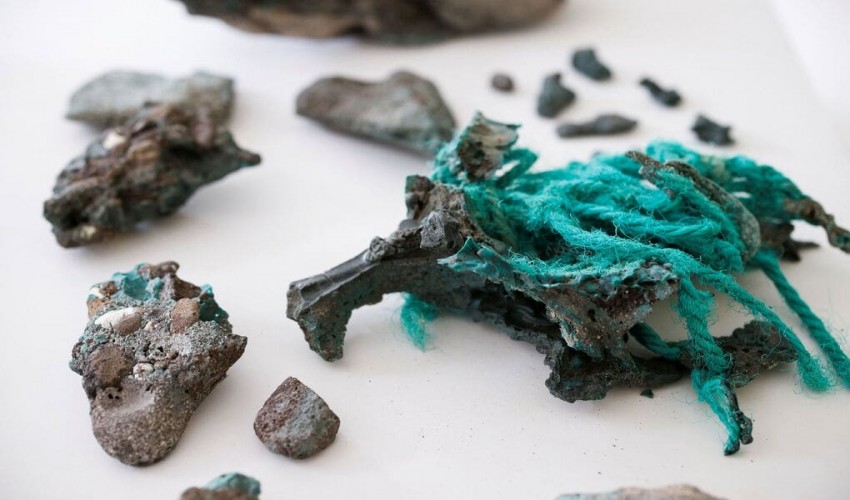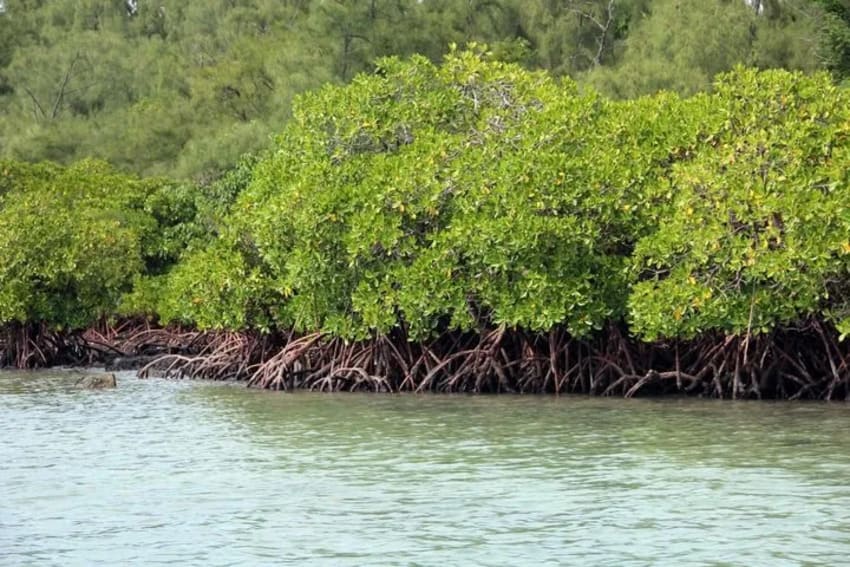Environment Science and technology
9
Chinese scientists discover plastic trash chemically attached to rocks.
- Rating
- plastics
- sediment
- sedimentary
- microplastics
- microplastic
- landfills
- plastic
- geology
- geological
Thin layers of plastic garbage chemically attached to rocks have been discovered by scientists, who believe this to be a new kind of plastic pollution.
The discovery furthers the scientific community's acceptance of plastics as a component of Earth's geology. Sedimentary rocks in Brazil were found to include plastic bottle tops, plastic earrings, and other forms of trash by geologists in the year 2020. The rocks were given the name anthropoquinas1. Scientists have also discovered "plastiglomerates," which are created when molten plastic binds together natural and man-made objects like rocks and sand.
According to Deyi Hou, a soil and groundwater expert at Tsinghua University in Beijing, "people in the twentieth and twenty-first century are producing new geological records." In a creek in Hechi City, China, Hou and his coworkers came upon boulders covered in plastic sheeting.
Hou claims that his team has discovered chemical interactions between plastic and rocks for the first time in a research published in Environmental Science and Technology on April 3. He explains that trash from the surrounding area of the creek is to blame for the plastic pollution. This trash includes polypropylene films (used to produce plastic bags) and polyethylene films (used by farmers to cover crops).
Carbon atoms at the surface of the polyethylene films were chemically bound to silicon in the rock with the aid of oxygen atoms when the researchers stared at the plastic-rock combinations using spectroscopic tools. The researchers identified a robust population of microorganisms living on the plastic rocks, which Hou speculates may have been responsible for the bonding. The scientists speculated that physical forces, rather than chemical bonds, held the polypropylene sheets to the rocks.
A new era
Plastic rocks are not only worrisome because of their potential to alter Earth's geology, but also because of the microplastics they release into the atmosphere. These plastic pieces may be carried great distances by wind and water, can harm plants by penetrating their tissues, and may be consumed by fish and birds that mistook them for food. Hou and his colleagues detatched pieces of the films and subjected them to wet-dry cycles in the lab to simulate what may happen when the creek regularly floods in order to determine how much microplastic would be released by the sheets linked to the rocks they found. Microplastic production rates revealed by the team are many times higher than those seen in laboratory experiments designed to replicate plastic leakage into landfills, oceans, and marine sediment.
Intriguing as Hou's research may be, according to Gerson Fernandino, a geoscientist at the Federal University of Rio Grande do Sul in Porto Alegre, Brazil, who studies sedimentary anthropoquinas, it is not yet clear whether the plastic-rock complexes truly represent a new kind of interaction between plastics and rocks. Nevertheless, Fernandino claims that these complexes are the first of their sort to arise in a freshwater ecosystem, as most previous research has focused on the interactions of plastic with materials in landfills or along coastlines. According to Fernandino, these findings "enrich the conversation on plastics interacting with geological processes," but he also stresses that they are preliminary.
Hou admits that the data he has collected so far only represents a sample size of four. The group is still analysing the complexes in the lab and looking for further examples of plastic interactions in terrestrial ecosystems.
The expanding corpus of knowledge on plastic rocks is being interpreted by some geologists as more proof that people have significantly altered Earth's geology since the middle of the twentieth century. There are others who believe this change warrants the establishment of a new geological period called the Anthropocene. The Anthropocene Working Group, a group of experts convened by the International Commission on Stratigraphy, will soon cast a vote to determine where on Earth the beginning of this geological age can be definitively established by analysing the presence of industrial and radioactive elements.
Jan Zalasiewicz, a palaeobiologist at the University of Leicester in the United Kingdom who proposed the new epoch in 2008, says that Hou's work helps to make the Anthropocene tangible by bringing it back to the present day: "When you go into the field, go to a stream, and pick up plastic-covered rocks, it helps make the Anthropocene tangible."
Leave a Reply
Your email address will not be published. Required fields are marked *


